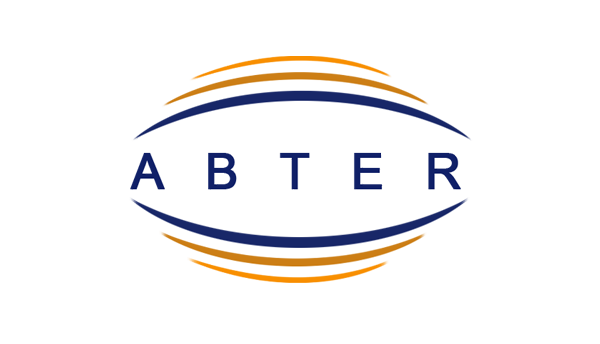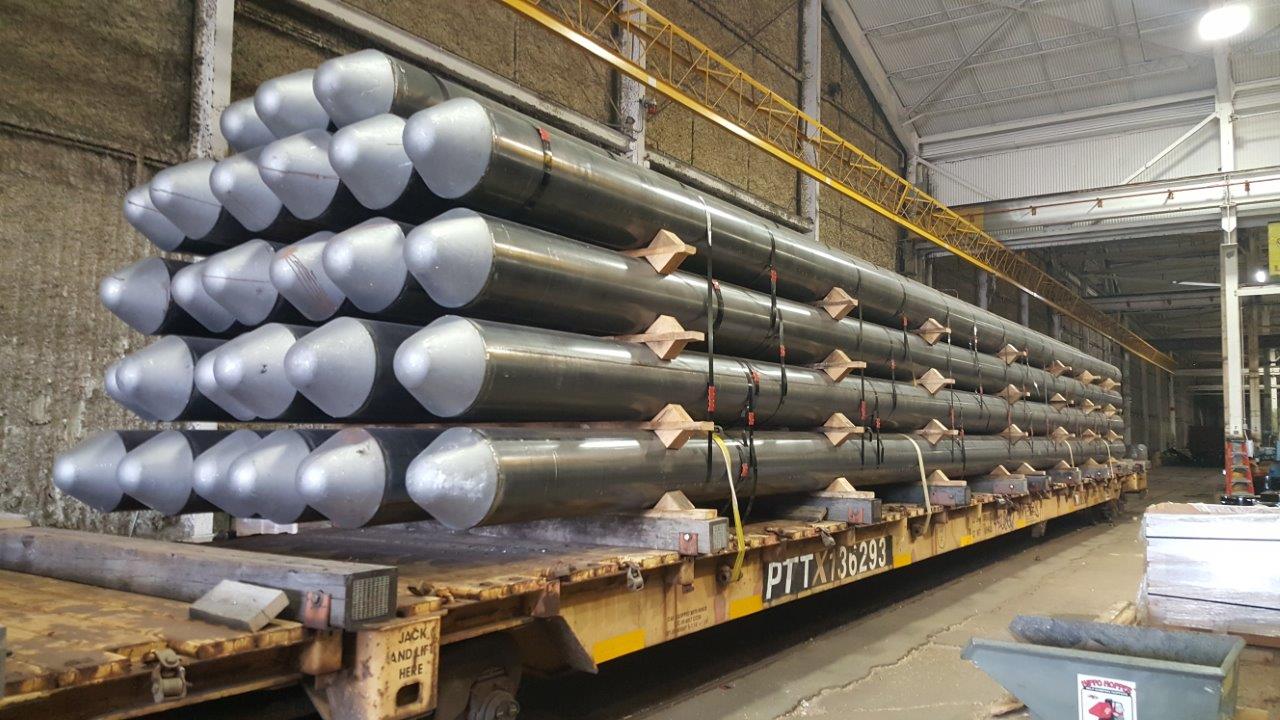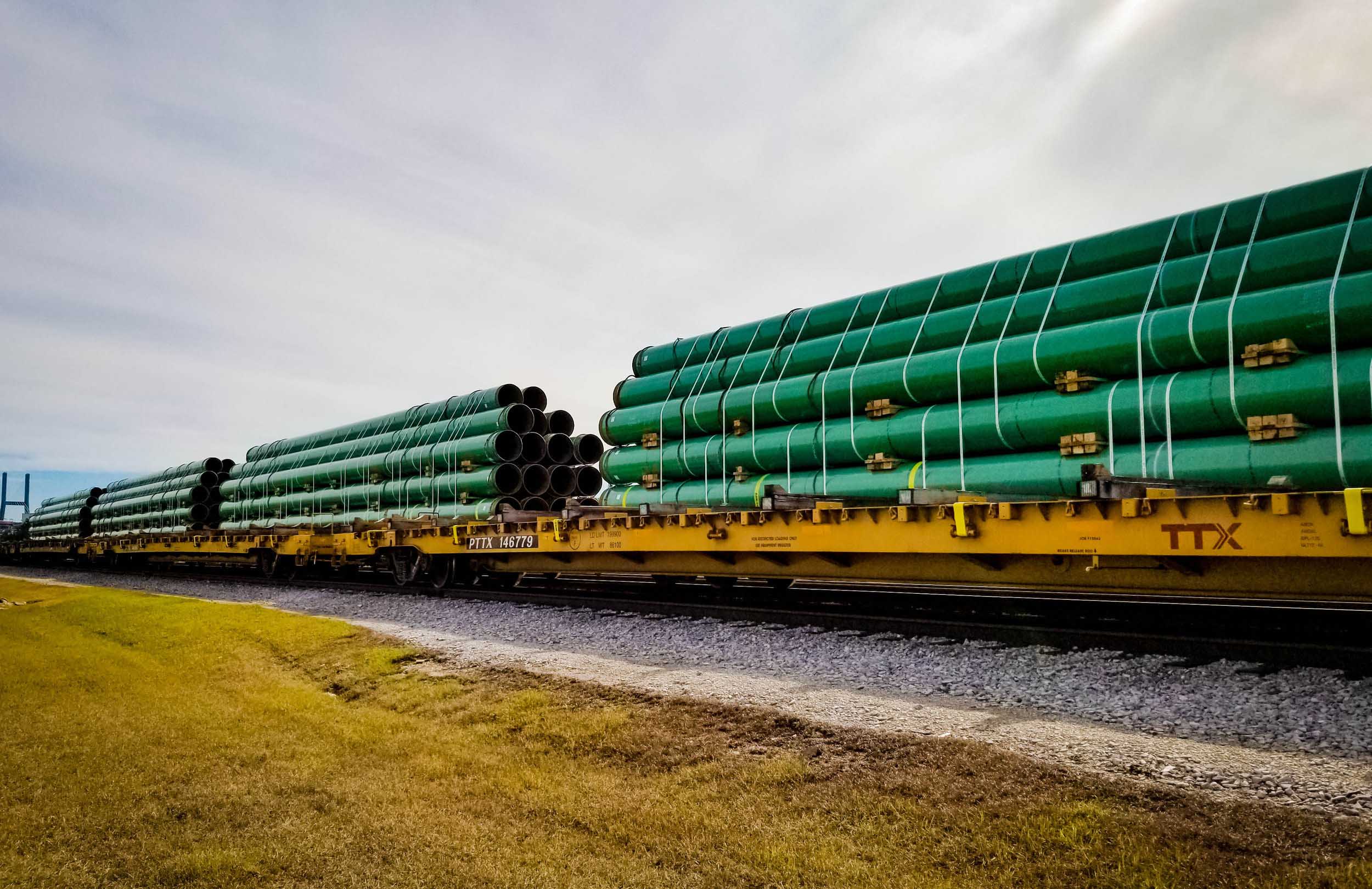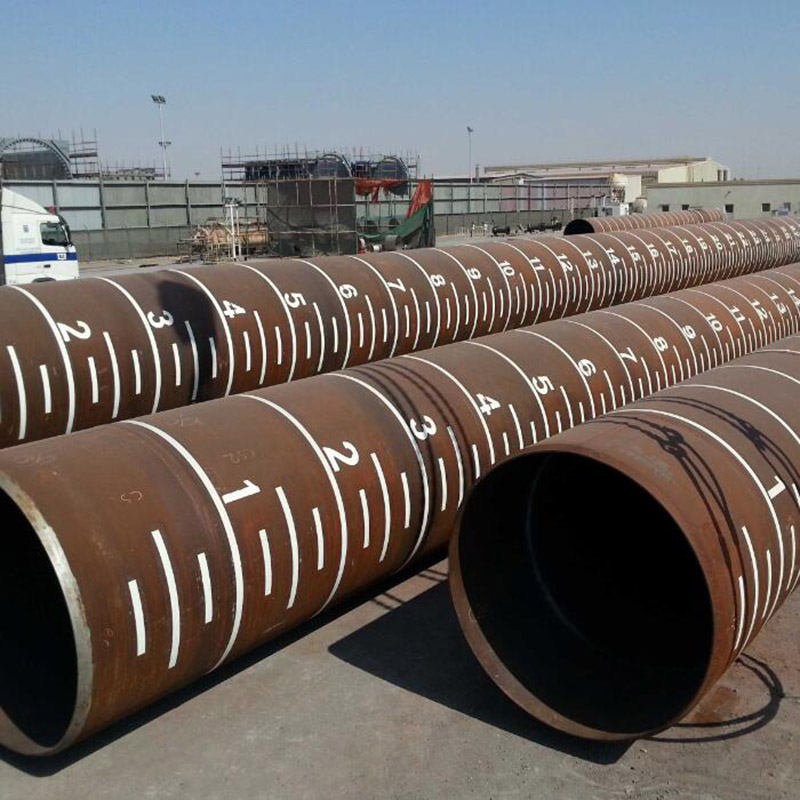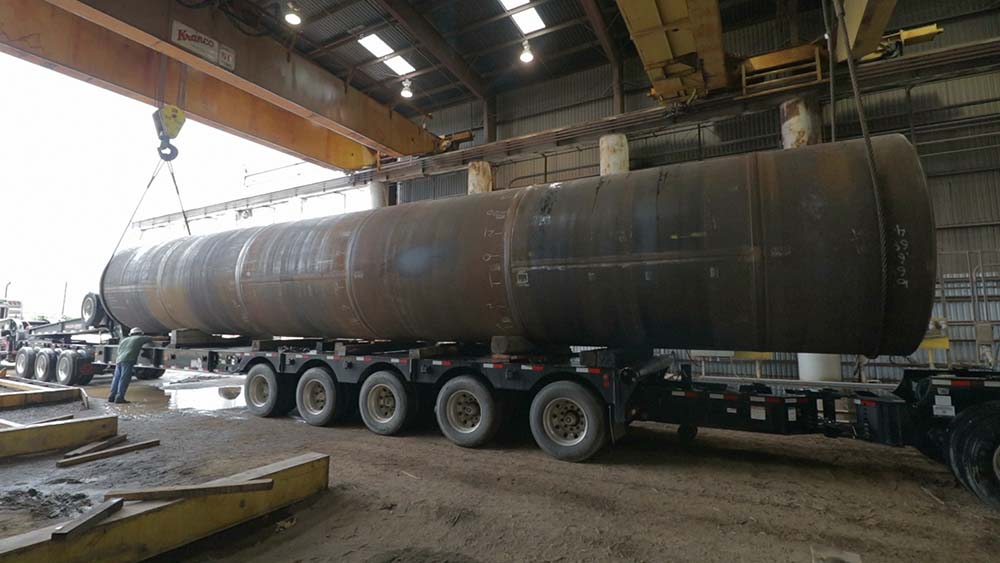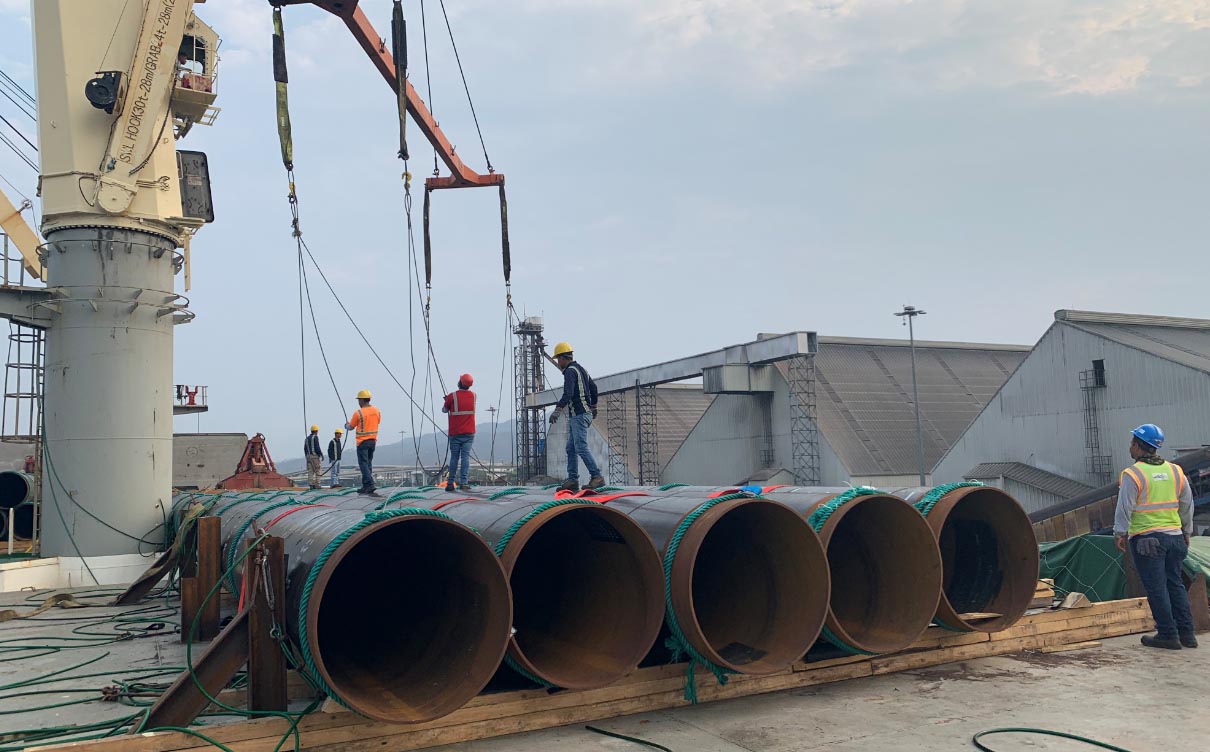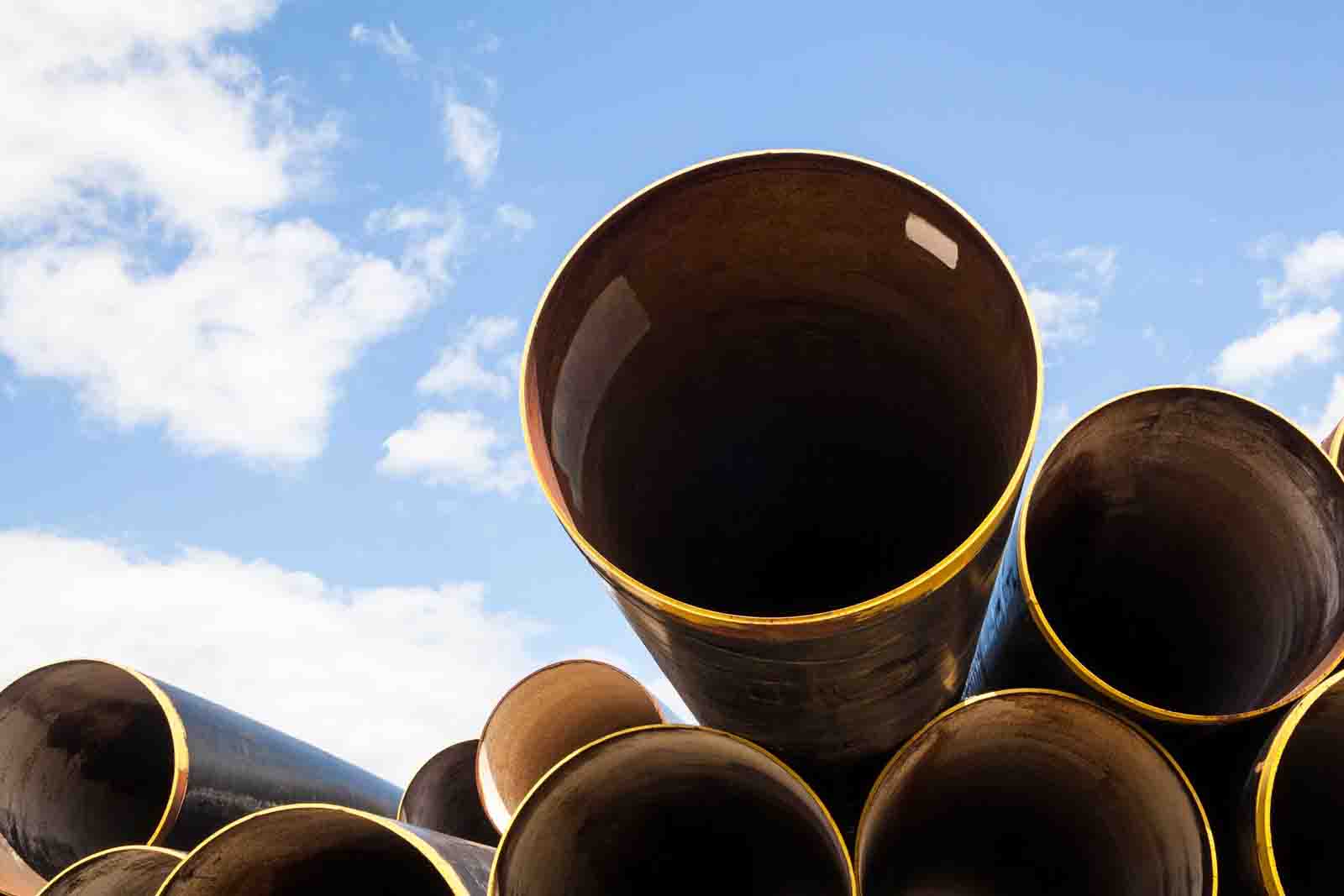Steel Grades for Pipe Piling: API and European Standards
Introduction to Pipe Piling and Steel Grades
Pipe piling is a critical component in civil engineering, providing foundational support for structures such as buildings, bridges, and offshore platforms. Steel pipes used for piling must possess specific mechanical properties, chemical compositions, and dimensional tolerances to ensure structural integrity under heavy loads and diverse environmental conditions. Two primary standards govern the steel grades used for pipe piling: the European standard EN10219-1 for cold-formed welded structural hollow sections and the American Petroleum Institute’s API 5L, Product Specification Level 1 (PSL1) for line pipes. These standards define the requirements for steel grades, ensuring they meet the demands of applications ranging from deep foundation systems to marine structures.
The EN10219-1 standard specifies grades like S235JRH, S275JOH/J2H, S355JOH/JEH, S420MH, and S460MH, which are designed for structural applications with varying yield strengths and elongation properties. The API 5L PSL1 standard includes grades such as B, X42, X46, X52, X56, X60, X65, and X70, tailored for pipelines but also widely used in piling due to their robustness. Each grade is engineered to balance strength, ductility, and weldability, with chemical compositions optimized to resist corrosion and ensure manufacturability. Dimensional tolerances, as outlined in EN10219-2 and API 5L/ISO 3183, ensure consistency in pipe dimensions, straightness, and mass, critical for reliable installation and performance.
This article provides a comprehensive overview of steel grades for pipe piling, detailing their mechanical properties, chemical compositions, dimensional tolerances, and applications. Detailed tables summarize the key parameters, offering a valuable reference for engineers, contractors, and manufacturers. By exploring these standards and their implications, this article aims to highlight the suitability of these steel grades for modern piling applications.
Mechanical Properties of EN10219-1 Steel Grades
The EN10219-1 standard specifies the mechanical properties of cold-formed welded structural hollow sections used in pipe piling, focusing on yield strength, tensile strength, and elongation. These properties ensure that the steel can withstand the compressive and tensile forces encountered in deep foundation systems. The standard includes grades S235JRH, S275JOH/J2H, S355JOH/JEH, S420MH, and S460MH, each tailored for specific structural demands. For example, S235JRH offers a minimum yield strength of 235 N/mm² for thicknesses up to 16 mm, dropping slightly to 225 N/mm² for thicknesses between 16 and 40 mm, with a tensile strength of 340–470 N/mm² and a minimum elongation of 22%. This grade is suitable for less demanding applications, such as shallow foundations.
Higher grades like S355JOH/JEH, with a yield strength of 355 N/mm² (345 N/mm² for thicker sections) and tensile strength of 490–630 N/mm², are used in more robust structures like bridges and high-rise buildings. S420MH and S460MH, with yield strengths of 420 N/mm² and 460 N/mm² respectively, cater to heavy-duty applications, such as offshore platforms, where high strength and toughness are critical. These grades maintain respectable elongation (19% and 17%, respectively), ensuring ductility during installation and under dynamic loads. The variation in properties with thickness reflects the impact of cold-forming processes on the material’s microstructure, requiring careful selection based on project specifications.
The mechanical properties of these grades are tested under controlled conditions, with elongation dependent on the cross-sectional area of the test piece. This ensures that the pipes can endure the stresses of pile driving and long-term loading, making EN10219-1 grades a reliable choice for structural piling applications.
Mechanical Properties of API 5L PSL1 Steel Grades
The API 5L PSL1 standard defines the mechanical properties of steel grades used for line pipes, which are also widely adopted for pipe piling due to their strength and versatility. Grades range from B to X70, with increasing yield and tensile strengths to meet diverse engineering requirements. Grade B, the baseline, offers a minimum yield strength of 245 N/mm² and a tensile strength of 415 N/mm², with a minimum elongation of 23%, making it suitable for general piling applications. Higher grades like X52 (yield strength 360 N/mm², tensile strength 460 N/mm²) and X70 (yield strength 485 N/mm², tensile strength 570 N/mm²) are used in demanding environments, such as deep foundations for offshore wind turbines or heavy infrastructure projects.
The progression from Grade B to X70 reflects advancements in steel manufacturing, with higher grades incorporating microalloying elements to enhance strength without sacrificing ductility. For instance, X65 and X70, with yield strengths of 450 N/mm² and 485 N/mm², respectively, offer superior performance in high-load scenarios but have slightly lower elongation (19% and 17%), indicating a trade-off between strength and ductility. These properties are critical for pipe piling, where the material must resist buckling, shear, and tensile forces during installation and service.
The API 5L PSL1 grades are designed to ensure weldability and toughness, with elongation values tailored to the cross-sectional area of the test piece. This adaptability makes them suitable for both seamless and welded pipes, providing flexibility for piling applications in various soil conditions and environmental exposures.
Chemical Composition of EN10219-1 Steel Grades
The chemical composition of EN10219-1 steel grades is carefully controlled to achieve the desired mechanical properties and corrosion resistance. Grades S235JRH, S275JOH/J2H, S355JOH/JEH, S420MH, and S460MH have specific limits on carbon (C), manganese (Mn), phosphorus (P), sulfur (S), silicon (Si), nitrogen (N), and carbon equivalent value (CEV). For instance, S235JRH has a maximum carbon content of 0.17%, manganese of 1.40%, and CEV of 0.35%, ensuring good weldability and moderate strength. The low phosphorus (0.045%) and sulfur (0.045%) contents minimize brittleness and improve toughness.
Higher grades like S355JOH/JEH, with a carbon content up to 0.22% and manganese up to 1.60%, incorporate silicon (up to 0.55%) to enhance strength while maintaining a CEV of 0.45 for weldability. S420MH and S460MH, designed for high-strength applications, reduce carbon to 0.16% and sulfur to 0.030%, with nitrogen limits of 0.020% and 0.025%, respectively, to prevent grain boundary embrittlement. The CEV, which indicates weldability, is tightly controlled (0.43 for S420MH), ensuring these grades can be welded without excessive risk of cracking.
The chemical composition is optimized to balance strength, ductility, and corrosion resistance, making these grades suitable for piling in diverse environments, from urban construction sites to marine settings. The absence of vanadium and niobium in the standard composition simplifies manufacturing, while the controlled CEV ensures compliance with welding standards, critical for fabricating large-diameter piling pipes.
Chemical Composition of API 5L PSL1 Steel Grades
The API 5L PSL1 standard specifies the chemical composition of steel grades to ensure performance in pipeline and piling applications. Grades B through X70 have a maximum carbon content of 0.26%, with manganese limits increasing from 1.20% for Grade B to 1.65% for X70. Phosphorus and sulfur are capped at 0.030% to enhance toughness and reduce the risk of inclusions. The sum of titanium, vanadium, and niobium is limited to 0.15%, with niobium and vanadium together not exceeding 0.06% unless otherwise agreed, to control grain size and improve strength.
A notable feature of API 5L is the allowance for manganese content to increase by 0.05% for each 0.01% reduction in carbon below the maximum, up to 1.50% for grades X42–X52, 1.65% for X56–X65, and 2.00% for X70. This flexibility enhances strength without compromising weldability, critical for piling pipes subjected to heavy loads. The low carbon content ensures good weldability, while manganese contributes to solid-solution strengthening, improving yield strength in higher grades like X65 and X70.
The chemical composition is designed to provide a balance of strength, toughness, and corrosion resistance, making API 5L grades versatile for piling in challenging environments, such as offshore platforms exposed to seawater. The controlled use of microalloying elements ensures that these grades meet the rigorous demands of both pipeline and piling applications, offering reliability and cost-effectiveness.
Dimensional Tolerances for Pipe Piling
Dimensional tolerances are critical for ensuring the quality and performance of pipe piling, as they affect installation, structural integrity, and compatibility with design specifications. The EN10219-2 standard specifies tolerances for cold-formed welded structural hollow sections, with an outside diameter tolerance of ±1% (maximum ±10.0 mm), wall thickness tolerance of ±10% (maximum ±2.0 mm), and straightness of 0.20% of the total length. Out-of-roundness is limited to ±2%, and mass tolerance is ±6%. Weld bead height is capped at 3.5 mm for thicknesses ≤14.2 mm and 4.8 mm for thicker sections, ensuring smooth surfaces for welding and coating.
The API 5L/ISO 3183 standard provides tolerances for line pipes, which are also applicable to piling. For pipes with an outside diameter ≤1422 mm, the diameter tolerance is ±0.5% (maximum ±4.0 mm), with wall thickness tolerances of +10%/-3.5% for thicknesses <15.0 mm and ±1.5 mm for thicker sections. Straightness is maintained at 0.20% of the total length, and out-of-roundness is limited to ±1.5% for diameter-to-thickness ratios ≤75. Weld bead height follows similar limits to EN10219-2. For pipes >1422 mm, tolerances are agreed upon between manufacturer and purchaser.
These tolerances ensure that piling pipes meet the precision required for pile driving and load-bearing applications, minimizing issues like misalignment or buckling. Compliance with these standards guarantees reliability in diverse projects, from urban infrastructure to offshore installations.
Mechanical Properties Comparison Table
The following tables summarize the mechanical properties of steel grades for pipe piling under EN10219-1 and API 5L PSL1 standards, providing a clear reference for engineers and contractors.
EN10219-1 Mechanical Properties
| Steel Grade | Min Yield Strength ReH (T≤16mm) N/mm² | Min Yield Strength ReH (16≤T≤40mm) N/mm² | Min Ultimate Tensile Strength Rm (3≤T≤40mm) N/mm² | Min Elongation (T≤40mm) % |
|---|---|---|---|---|
| S235JRH | 235 | 225 | 340–470 | 22 |
| S275JOH/J2H | 275 | 265 | 410–560 | 20 |
| S355JOH/JEH | 355 | 345 | 490–630 | 20 |
| S420MH | 420 | 400 | 500–660 | 19 |
| S460MH | 460 | 440 | 530–720 | 17 |
API 5L PSL1 Mechanical Properties
| Steel Grade | Min Yield Strength ReH N/mm² | Min Ultimate Tensile Strength Rm N/mm² | Min Elongation % |
|---|---|---|---|
| B | 245 | 415 | 23 |
| X42 | 290 | 415 | 23 |
| X46 | 320 | 435 | 22 |
| X52 | 360 | 460 | 21 |
| X56 | 390 | 490 | 19 |
| X60 | 415 | 520 | 18 |
| X65 | 450 | 535 | 19 |
| X70 | 485 | 570 | 17 |
These tables highlight the range of mechanical properties available, allowing engineers to select grades based on load requirements and environmental conditions.
Chemical Composition Comparison Table
The chemical compositions of EN10219-1 and API 5L PSL1 steel grades are summarized below, emphasizing their suitability for piling applications.
EN10219-1 Chemical Composition
| Steel Grade | C Max % | Mn Max % | P Max % | S Max % | Si Max % | N Max % | CEV Max % |
|---|---|---|---|---|---|---|---|
| S235JRH | 0.17 | 1.40 | 0.045 | 0.045 | – | 0.009 | 0.35 |
| S275JOH/J2H | 0.20 | 1.50 | 0.040 | 0.040 | – | 0.009 | 0.40 |
| S355JOH/JEH | 0.22 | 1.60 | 0.040 | 0.040 | 0.55 | 0.009 | 0.45 |
| S420MH | 0.16 | 1.70 | 0.035 | 0.030 | 0.50 | 0.020 | 0.43 |
| S460MH | 0.16 | 1.70 | 0.035 | 0.030 | 0.60 | 0.025 | – |
API 5L PSL1 Chemical Composition
| Steel Grade | C Max % | Mn Max % | P Max % | S Max % | Ti+V+Nb Max % |
|---|---|---|---|---|---|
| B | 0.26 | 1.20 | 0.030 | 0.030 | 0.15 |
| X42 | 0.26 | 1.30 | 0.030 | 0.030 | 0.15 |
| X46 | 0.26 | 1.40 | 0.030 | 0.030 | 0.15 |
| X52 | 0.26 | 1.40 | 0.030 | 0.030 | 0.15 |
| X56 | 0.26 | 1.40 | 0.030 | 0.030 | 0.15 |
| X60 | 0.26 | 1.40 | 0.030 | 0.030 | 0.15 |
| X65 | 0.26 | 1.45 | 0.030 | 0.030 | 0.15 |
| X70 | 0.26 | 1.65 | 0.030 | 0.030 | 0.15 |
These tables provide a clear comparison of chemical compositions, aiding in the selection of grades for specific piling requirements.
Dimensional Tolerances Table
The dimensional tolerances for pipe piling under EN10219-2 and API 5L/ISO 3183 standards are summarized below, ensuring precision in manufacturing and installation.
| Standard | Outside Diameter D | Wall Thickness T | Straightness | Out-of-roundness | Mass | Max Weld Bead Height |
|---|---|---|---|---|---|---|
| EN10219-2 | ±1% Max ±10.0mm | ±10% Max ±2.0mm | 0.20% of total length | ±2% | ±6% | T≤14.2mm: 3.5mm T>14.2mm: 4.8mm |
| API 5L/ISO 3183 (≤1422mm) | ±0.5% ≤4.0mm | <15.0mm: ±10%/-3.5% ≥15.0mm: ±1.5mm |
0.20% of total length | D/t≤75: ±1.5% | +10%/-3.5% | T≤13.0mm: 3.5mm T>13.0mm: 4.8mm |
| API 5L/ISO 3183 (>1422mm) | As agreed | As agreed | 0.20% of total length | As agreed | As agreed | T≤13.0mm: 3.5mm T>13.0mm: 4.8mm |
These tolerances ensure that piling pipes meet the precision required for reliable performance in structural applications.
Applications of Pipe Piling Steel Grades
Steel grades specified by EN10219-1 and API 5L PSL1 are used in a wide range of piling applications, from urban infrastructure to offshore structures. EN10219-1 grades like S235JRH are ideal for shallow foundations in residential and commercial buildings, where moderate strength and good weldability are sufficient. Higher grades like S355JOH/JEH and S460MH are employed in heavy infrastructure projects, such as bridges, high-rise buildings, and port facilities, where high yield strength and resistance to dynamic loads are essential. These grades are particularly valued in Europe for their compliance with structural standards and versatility in cold-formed applications.
API 5L PSL1 grades, originally designed for pipelines, are widely used in piling for offshore platforms, wind turbines, and marine structures due to their high strength and corrosion resistance. Grades X52 to X70 are preferred for deep foundations in challenging soil conditions or marine environments, where their superior yield strength and toughness ensure stability under heavy loads and cyclic stresses. Grade B and X42 are used in less demanding applications, such as temporary piling or smaller infrastructure projects, offering cost-effective solutions without compromising reliability.
The choice of steel grade depends on factors like load requirements, soil conditions, and environmental exposure. Both standards provide options for seamless and welded pipes, allowing flexibility in manufacturing and installation. These grades ensure that piling systems can withstand the rigors of pile driving, long-term loading, and exposure to corrosive elements like seawater, making them indispensable in modern construction.
Comparison with Incoloy 901 for Piling Applications
While EN10219-1 and API 5L PSL1 grades are carbon steels optimized for structural piling, Incoloy 901 (UNS N09901/DIN 1.4898), a nickel-iron-chromium superalloy, is used in specialized applications requiring extreme corrosion resistance and high-temperature performance. Incoloy 901, with a yield strength of approximately 900 N/mm² and tensile strength of 1150 N/mm², far exceeds the strength of EN10219-1 and API 5L grades. Its composition, with 40–45% nickel, 11–14% chromium, and 5–7% molybdenum, provides exceptional resistance to oxidation and pitting corrosion, making it suitable for high-temperature environments like gas turbine exhausts or chemical processing plants.
In contrast, EN10219-1 and API 5L grades, with carbon contents up to 0.26% and manganese up to 1.65%, are designed for cost-effective structural applications rather than high-temperature or extreme corrosion environments. Their corrosion resistance is adequate for soil or marine exposure with proper coatings, but they cannot match Incoloy 901’s performance in aggressive chemical or high-temperature settings. However, Incoloy 901’s high cost and difficult weldability make it impractical for general piling, where carbon steels offer a better balance of performance and economy.
For piling applications, EN10219-1 and API 5L grades are preferred due to their availability, lower cost, and suitability for standard structural requirements. Incoloy 901 is reserved for niche applications where its unique properties justify the expense, such as in corrosive marine environments or high-temperature industrial systems.
Challenges and Considerations in Pipe Piling
The use of EN10219-1 and API 5L PSL1 steel grades in pipe piling presents several challenges that engineers must address. One key consideration is corrosion, particularly in marine or acidic soil environments. While these grades offer adequate resistance with coatings, they lack the inherent corrosion resistance of alloys like Incoloy 901. Protective measures, such as galvanizing or epoxy coatings, are often required to extend service life, increasing project costs. Weldability is another concern, particularly for high-strength grades like S460MH or X70, where the carbon equivalent value must be carefully managed to prevent cracking during welding.
Dimensional tolerances are critical during pile driving, as deviations in diameter, thickness, or straightness can lead to installation issues or reduced load-bearing capacity. The stringent tolerances of EN10219-2 and API 5L ensure reliability, but manufacturers must maintain precise control during production. Soil conditions also influence grade selection, with high-strength grades like X70 or S460MH required for dense or rocky soils, while lower grades suffice for softer conditions.
Cost is a significant factor, as high-strength grades increase material and processing expenses. Engineers must balance performance requirements with budget constraints, often opting for mid-range grades like S355JOH or X52 for versatility. Environmental considerations, such as recycling and sustainable manufacturing, are also gaining importance, prompting the use of recycled steel and energy-efficient production methods. By addressing these challenges, engineers can optimize the performance and longevity of piling systems using these steel grades.
Future Trends in Pipe Piling Materials
The future of pipe piling materials is shaped by advancements in steel manufacturing, sustainability, and the growing demand for resilient infrastructure. Innovations in microalloying and thermomechanical processing are enhancing the strength and toughness of EN10219-1 and API 5L grades, allowing for thinner, lighter pipes without compromising performance. These advancements reduce material costs and environmental impact, aligning with global sustainability goals. Additive manufacturing and precision welding techniques are also emerging, enabling the production of complex piling designs with improved dimensional accuracy.
The rise of renewable energy projects, such as offshore wind farms, is driving demand for high-strength grades like X70 and S460MH, which can withstand the dynamic loads and corrosive conditions of marine environments. Research into corrosion-resistant coatings and hybrid materials is further extending the service life of piling pipes, reducing maintenance costs. Additionally, the integration of digital technologies, such as real-time monitoring of pile performance, is improving the design and installation process, ensuring optimal grade selection based on site-specific conditions.
Sustainability is a key focus, with manufacturers exploring recycled steel and low-carbon production methods to reduce the environmental footprint of piling pipes. These trends ensure that EN10219-1 and API 5L grades remain relevant, offering cost-effective, high-performance solutions for the evolving needs of infrastructure and energy projects. As technology advances, these steel grades will continue to play a vital role in building resilient foundations for the future.
Steel grades specified by EN10219-1 and API 5L PSL1 standards are essential for pipe piling, providing a range of mechanical properties, chemical compositions, and dimensional tolerances to meet diverse engineering needs. EN10219-1 grades like S235JRH, S355JOH, and S460MH offer versatility for structural applications, from shallow foundations to heavy infrastructure, while API 5L grades like B, X52, and X70 excel in demanding environments like offshore platforms. The chemical compositions ensure weldability and corrosion resistance, while stringent tolerances guarantee precision during installation.
Compared to specialized alloys like Incoloy 901, these carbon steels offer a cost-effective balance of strength and durability for general piling applications. Challenges such as corrosion, weldability, and cost require careful consideration, but advancements in manufacturing and sustainable practices are addressing these issues. The detailed tables provided in this article serve as a valuable reference for selecting the appropriate grade based on project requirements, ensuring safety and reliability in construction.
